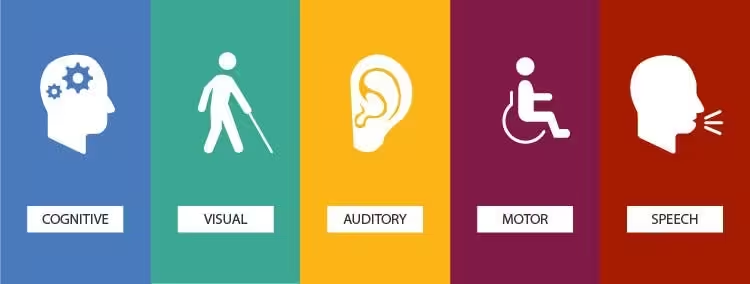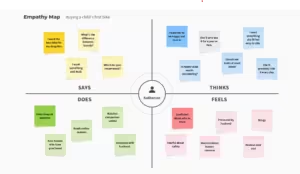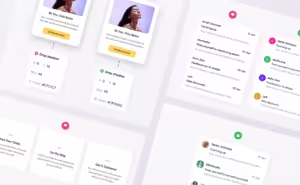
Accessibility should be a standard feature in product design. As society moves towards greater inclusivity for all individuals—regardless of race, gender, or disabilities—the importance of accessibility in product design must evolve as well. Many web developers and product designers are now prioritizing accessibility to ensure that their products cater to all users, including those with disabilities.
So, how can you ensure that your website is easily accessible to individuals with unique needs? One effective solution is to hire skilled product designers. Limeup offers qualified web development services that can enhance your business website’s ranking. Their team of designers will create tailored product designs that align with your brand, requirements, and preferences.
What is Accessible Product Design?
Creating accessible product design means ensuring that all users can navigate your software easily and comfortably. Everyone should be able to access your website, regardless of disabilities, age, or circumstances. It must be user-friendly for individuals with both temporary and permanent impairments, including visual, auditory, cognitive, physical, and speech disabilities.
Website accessibility allows individuals facing challenges to move through your site effortlessly. For example, to accommodate visually impaired users, your site should feature good color contrast and readable text. Incorporating a text-to-speech function can further assist those who struggle with reading.
Consider a parent visiting your website while holding a baby in one arm. The site should allow them to read content, view graphics, and navigate pages easily, using just one functional arm.
Why is Accessibility Important?
Accessibility extends beyond the tech and digital realms; it is fundamentally a human rights issue that must be addressed in every aspect of life, both online and offline. Here are several reasons why accessibility is crucial for your product design.
Better User Experience (UX)
Website accessibility significantly impacts the user experience. An accessible product design ensures ease of access, use, and navigation, leading to a more enjoyable experience for all visitors. Accessibility benefits everyone, not just users with disabilities; those without will also enjoy a seamless interaction on your site.
Compliance with Website Accessibility Laws
Countries like the United States have laws and regulations mandating inclusivity for websites and applications. These accessibility laws require that software and digital technologies be accessible to all individuals with impairments, regardless of their disabilities. Failing to ensure universal accessibility in your product designs could result in legal repercussions.
Higher Lead Generation and Conversion
A highly accessible website enhances the user experience, making it more likely that visitors will return. Increased traffic translates to a greater chance of lead generation and conversion. Users, including those with disabilities, represent potential customers who can be engaged and persuaded to purchase your products or connect with your brand through improved accessibility and user experience.
Inclusive and Non-discriminate Branding
A brand’s image and reputation speak volumes about a business. How do you think people would perceive your brand if individuals with disabilities are treated differently? To avoid being seen as discriminatory, it’s essential to create an all-accessible product design that prioritizes the needs of marginalized users.
How to Ensure Product Design Accessibility?
Having a basic understanding of product design accessibility isn’t sufficient to ensure true accessibility. Even experienced product designers may overlook critical accessibility features, resulting in a design that isn’t universally accessible. It’s essential to have a team of skilled product designers with technical expertise to guarantee ease of access for individuals with diverse needs.
Use Proper Colors and Themes
The themes and color combinations of your website are essential for accessibility. They play a crucial role in the readability and clarity of your content. It’s important to use appropriate color contrasts between text and background to ensure that all users, particularly those with visual impairments, can easily read and understand your site.
Think About Your Text
Much of your website consists of text and paragraphs, which are vital for accessibility, especially for individuals with dyslexia and visual impairments. Conduct research to ensure your text is easy to read. Pay attention to font style, size, effects, and character spacing to help users effectively decode the information on your site.
Consider Touch Targets for Mobile Users
Touch targets, or touch zones, are areas on a mobile screen that are easily reachable by the thumb. Typically located at the bottom of the screen, these targets make navigation easier for single-handed users. Keep this in mind when designing your product to ensure that mobile users can navigate your website or app with ease.
Perform User Testing
A best practice among professional web developers and product designers is conducting user testing. To ensure universal accessibility for your application or website, it’s essential to test with a diverse group of users, including those with special needs. This process helps identify design elements that may need adjustments to accommodate various users.
Why Do You Need Accessibility Testing?
Accessibility testing is a critical step in ensuring an inclusive digital product. Despite careful design, gaps and accessibility issues may still exist. Conducting accessibility testing helps identify these shortcomings, allowing you to revise your website and enhance its inclusivity.
Conclusion
Product design accessibility is key to inclusivity. Web developers and designers increasingly recognize that universal access drives traffic and improves lead conversion. By prioritizing accessible design, you can effectively reach a broader market, ensuring that all users—regardless of ability—can access your website.





2 responses to “The Significance of Accessibility in Product Design”
[…] your business’s success. Let’s explore how market research can enhance your business planning, product development, and competitive […]
[…] this article, we’ll explore practical and actionable steps to make your website more accessible for dyslexic users, enhancing overall usability for everyone. Whether you’re a web developer, […]